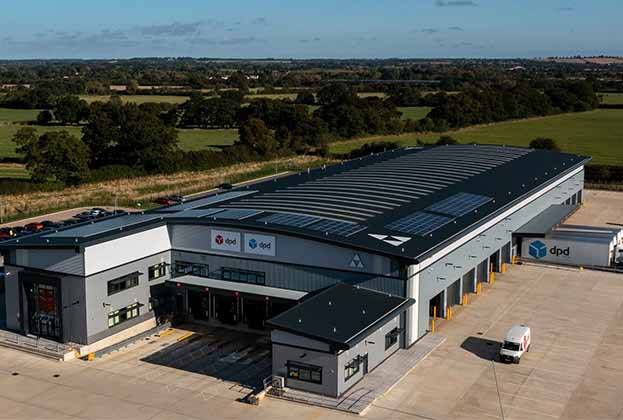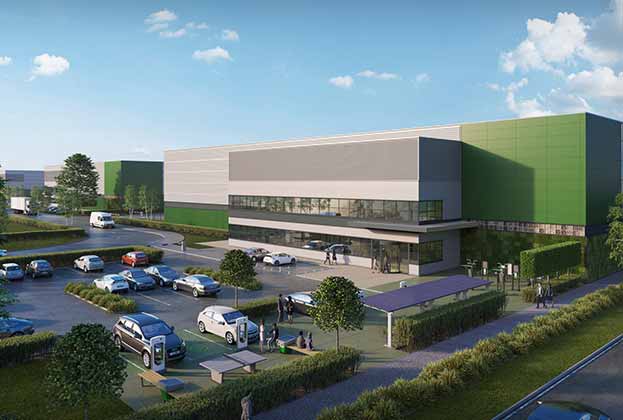Recent global challenges have proven that the I&L sector’s workers, stock of facilities and distribution networks are unquestionably ‘critical national infrastructure’
I&L facilities and their supply chains support the functioning of our economy and the way we live our lives. The food we eat, the products and services we purchase, the materials used to build new homes and new infrastructure, even the vaccines that give us protection from Covid-19 are stored, manufactured and distributed from warehouses and factories to ‘us’, the end customer. Without these facilities and the increasingly efficient supply chains that link them up with suppliers and end customers, the delivery of our purchases would be much slower, more expensive and we would have less choice.
It can be difficult to acknowledge the critical role played by the I&L sector when everything is running smoothly. It is much easier to understand its importance when things don’t work quite as well. The six-day blockage of the Suez Canal in March 2021 created a domino effect on global supply chains, which affected not only those sectors relying on container shipping but also the transport sector as fuel vessels were delayed too. The shortage of HGV drivers in autumn 2021 led to fuel shortages in UK petrol stations and forced businesses to close down sites or cut product lines, adding to the backlog of production caused by the Covid-19 pandemic.
These challenges have brought to the fore the importance of supply chain resilience and the need for a sufficient supply of appropriately located I&L premises. For instance, during the recent lockdowns, the I&L sector has been instrumental to ensure the effective delivery of medical stock in hospitals and food supplies on supermarket shelves. As vaccines were made available, the operation of effective distribution networks across transport modes was fundamental to supply vaccination centres while meeting stringent time frames and cold-store requirements. The pandemic has indeed proven that our daily life depends on the I&L sector. Its workers, stock of facilities and distribution networks are unquestionably ‘critical national infrastructure.’ The sector is also critical to the Government’s ‘Levelling Up’ agenda given it is one of the few large sectors that invests more in the central and northern parts of the country rather than London and the south. We discuss this issue further in the ‘Growing Social Value Credentials’ chapter.

The sector’s growth is critical to the UK’s future prosperity
The sector is a significant employer of at least 3.8 million people. However, the true number of jobs is likely much higher as this only relates to ‘manufacturing, transportation and storage’1 activities. The wider supply chains of I&L businesses include other types of jobs not covered by this statistical classification. For instance, office-based roles and professions such as product design, research & development and engineering are routinely found in I&L companies but fall within the ‘professional services’ classification.
A prime example of the wider economic impacts of I&L supply chains is Amazon. In addition to the 55,000 staff3 it employs directly in the UK, the company is reported to have created 175,000 jobs via the 65,000 plus small and medium-sized enterprises (SMEs) who are selling professionally through Amazon4. While Amazon’s diversity lies primarily in the different products it handles and distributes, I&L companies can differ greatly in terms of their operational characteristics and the activities conducted from their premises.
Over the last ten years, jobs within the logistics part of the I&L sector have grown by 26% compared to only 14% across the economy as a whole
Kevin Mofid, Director, Commercial Research
Not only is the I&L sector large, at 14% of the England economy, but it is also fast-growing too. Over the last ten years, jobs within the logistics part of the I&L sector have grown by 26% compared to only 14% across the economy as a whole. Its growth profile has been further accelerated by the Covid-19 pandemic and Brexit as we discuss further below.
The sector is also highly productive with gross value added (GVA)5 per job currently at 58,000, some 12% higher than the average of all sectors. Its productivity is also predicted to grow at a faster pace, increasing by 29% between 2025 to 2039 compared to 18% across the UK economy as a whole6. These are extremely important statistics given the UK’s labour productivity currently lags many of its western European peers as shown in the chart below.
Improving the UK’s labour productivity will become increasingly important in a post-Brexit world given its important bearing on attracting inward investment, ability to pay higher wages and higher tax revenues for the Government which can be reinvested in critical services and infrastructure.
The vision of the UK becoming a “high-wage, high-skill” economy was central to Prime Minister Boris Johnson’s Conservative Party Conference speech on the 6th October 2021. Essential to achieving this vision will be to increase overall labour productivity, which in turn will require further growth in the more productive parts of the economy which undoubtedly include the I&L sector.
Not just e-commerce driving growth
While e-commerce grabs most of the headlines for driving growth in the sector, there are several growth drivers at play as illustrated below. Combined, these growth drivers are resulting in unpreceded demand for I&L premises.
Savills January 2022 Big Shed Briefing7 reported that 55.1 million sq ft (gross) of warehouse space had been transacted in 2021, setting a new annual record for take-up and being 86% above the long-term annual average.
Growth in UK freight
Freight arriving and leaving the UK needs to be sorted, packaged and distributed via a network of freight handling infrastructure (i.e. ports, airports, rail freight interchanges and motorways) and optimally located I&L premises in order to reach end customers.
Significant growth is forecast across all freight modes, which will increase demand for I&L space in the future. I&L premises should not be seen as separate from the infrastructure which enables goods to be moved around the UK, but should be considered critical national infrastructure itself.
E-commerce growth
E-commerce growth is being driven by two factors.
Firstly, population growth. The UK Government has announced a housing shortage in response to demand consistently outstripping supply. To address this situation, the Government has set an annual housing target of 300,000 homes per annum in England which it is struggling to achieve with less than 225,000 homes delivered per annum over the last five years8. Based on current online retail spending data9 and average household size10, 300,000 homes per annum equates to an extra 1.3 billion per annum in online retail spending. Using the ‘warehouse to homes ratio’ discussed in the BPF’s ‘What Warehouse Where?’ report11, this level of housing growth could generate a warehouse requirement of 21 million sq ft per annum on its own.
Secondly, technological improvements coupled with society’s increasing preference to purchase goods and services online. Retail spending is growing faster than the rate of population growth (+71%12 vs +14%13 over the last 20 years). More of this retail spending is being conducted online, for instance in 2006 online sales accounted for only 3% increasing to 19% prior to the Covid-19 pandemic in February 2020. The Covid-19 pandemic has accelerated this growth with internet sales currently at 26%14 and forecast to grow to 37% by 202515. The growth in online shopping has significant implications on future I&L demand given that e-commerce requires over three times the logistics space compared to traditional brick-and-mortar retailers16.
Faster deliveries
Consumer expectations for same-day or next-day delivery are reshaping the operating models of logistics companies. For instance, the emergence of Zapp, Getir and Deliveroo who deliver groceries “in minutes” while most of the major retailers such as Boots, Next and many more deliver next day. These trends are expected to increase demand for logistics space as reduced delivery times are expected to benefit online retailers.
To enable fast deliveries, stock needs to be held near the end customer before it’s picked up for the last mile. This requires warehousing space in regional and local distribution hubs nearby to population centres
Kevin Mofid, Director, Commercial Research
The Covid-19 pandemic has accelerated this shift: a survey by Bringg17 found that since the start of the pandemic 27% of retailers added same-day delivery for online orders as a fulfilment option, and one in three retailers are planning to add same-day delivery options in the next six to twelve months.
To enable fast deliveries, stock needs to be held near the end customer before it’s picked up for the last mile. This requires warehousing space in regional and local distribution hubs nearby to population centres. Large 3PLs like Amazon can more easily fit this model within their existing operations due to the sheer number of deliveries that they fulfil daily and their huge geographic coverage. For most retailers, however, this move will require investment in technology and upskilling of staff in addition to more warehousing space. In some cases, it could require setting up their own delivery fleet to improve margins, as already done by some large grocery retailers such as Sainsbury’s, Tesco and Asda, to cope with the growing demand for online orders.
Near-shoring / re-shoring
The Covid-19 pandemic and Brexit have created major disruptions for the sector’s supply chains in the form of border restrictions, lockdowns and access to labour such as HGV drivers. In order to minimise similar disruptions in the future, many UK companies are moving their operations either back to the UK or closer by. Likewise, certain I&L activities may be re-shored to the UK as it becomes more expensive to conduct business in the EU as a result of Brexit. According to a survey carried out in July 2020 by the Institute for Supply Management, 20% of firms are planning to or have already started to near-shore or re-shore. These findings are corroborated by a survey carried out by Savills18 whereby over 80% of respondents expected the Covid-19 pandemic to either ‘greatly increase’ or ‘somewhat increase’ on-shoring. This is likely to lead to higher domestic inventory requirements, further increasing long-term demand for I&L space.
Definitions
Near-shoring Transferring a business operation to a nearby country as opposed to a more distant one (i.e. off-shoring)
Re-shoring Moving a business that had gone overseas back to the country from which it had originally relocated
Co-locating different business functions
As the operations of modern-day I&L companies have evolved via investments in automation and technology, so have the types of occupations found in the sector. Alongside traditional roles such as factory/warehouse managers, forklift operators and delivery drivers are a diverse range of new roles such as software engineers in charge of automated systems, supply chain managers and data analysts.
While these new and more diverse occupations are the result of operational changes in the sector, these changes are impacting the design and composition of modern I&L premises. One such change is the increased prevalence of office space being co-located with warehouse and manufacturing facilities to house these new roles, but also as a means of improving operational efficiency, reducing estate costs and fostering stronger collaboration between different business units (see Bidfood case study, below). Based on Savills data tracking large units over 100,000 sq ft across the UK, the amount of office space found in I&L premises has increased over the last five years.
While the external appearance of premises occupied by a manufacturer may look similar to that occupied by a logistics company, their internal fit-out, even a building’s environmental performance are increasingly tailored to the specific requirements of individual companies. Modern I&L premises are also found to house gyms, cafes, restaurants, game rooms, and even hairdressers and physiotherapy suites. As a result, the types of activities undertaken, the levels of employment generated, and range of occupations found on site are very much company-specific. This diversity evident in the sector is not adequately captured via the current planning use classes or standard job densities applied to I&L developments.
As detailed in our Gymshark case study, below, their diverse operations are being co-located together meaning its premises do not fit solely within either an office (E(g)(i)), research and development (E(g)(ii)), industrial processes (E(g) (iii)), general industrial (B2) or storage and distribution (B8) use class. Nor do any of its different activities operate as ancillary to one another but rather as separate components of a collective whole.
Case Study: Gymshark
Gymshark is a fast-growing clothing company that is now expanding across multiple facilities in Blythe Valley Business Park (Solihull) to create a campus-style working environment. The large warehouse chosen for their new innovation hub provided Gymshark with the necessary flexibility to house multiple functions, combining production, storage, design studio, innovation and office space, meeting rooms and breakout areas. The building is designed to bring together these diverse uses and the people covering different roles to promote innovation and integration across a number of functions.
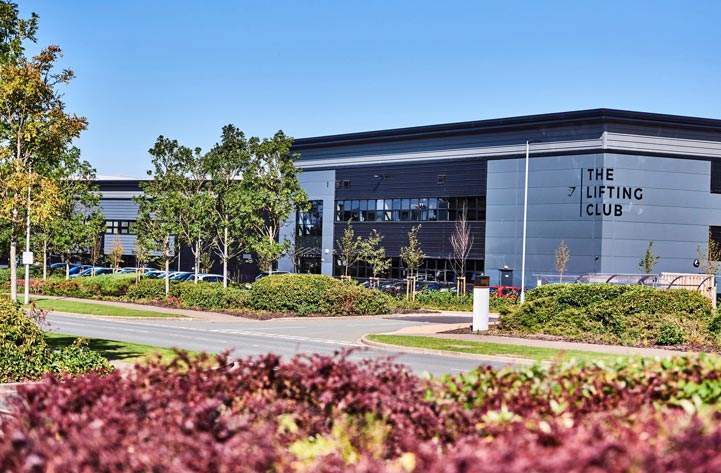
Source: Gymshark
Case Study: Bidfood
Purpose-built for Bidfood, the 117,400 sq ft premises in the Slough Trading Estate include 22,000 sq ft of head office accommodation arranged across three floors for marketing, commercial, quality control, finance, IT, customer services and telesales personnel. The remaining floorspace includes a customer presentation suite, temperature-controlled warehouse and distribution facility.
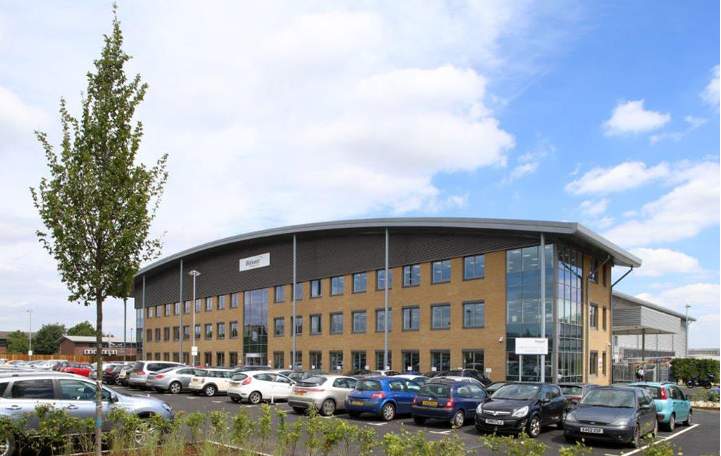
Source: SEGRO
Diverse and better-paid occupations
The I&L sector is subject to several misconceptions about average pay levels, skills required, and types of spaces provided. It is not a low-paid19, low-skilled employer, in fact, the reality is very different.
Firstly, average pay is higher than the UK average. Data from the Office for National Statistics (ONS) show annual wages above average at +£4,600 for Manufacturing and +£4,900 for Logistics.
Secondly, while other sectors have contracted during the Covid-19 pandemic, the I&L sector has continued to expand. Data on online job ads tracked by ONS via Adzuna indicate that job postings have increased by three times for transport and logistics roles and two and a half times for manufacturing roles since the start of the pandemic20. Two notable examples behind these statistics are the John Lewis Partnership and Amazon:
- The John Lewis Partnership is recruiting more than 550 permanent full-time driver and warehouse partner roles across its distribution centres and Waitrose.com and John Lewis.com customer delivery centres21; and
- Amazon committed to recruiting 20,000 temporary staff for the busy Christmas period across its network of fulfilment centres, sort centres and delivery stations22. These are in addition to the 7,000 permanent jobs it announced in September 202123.
Thirdly, I&L jobs have become increasingly diverse over the last decade. At the beginning of the decade the sector had a much more polarised distribution, with a higher share of managers at one end of the spectrum and more plant and machinery operatives and elementary occupations at the other end. Today we see a higher share of Professional and Associate Professional and Technical roles, typically associated with higher-skilled engineering and technological professions.
This is in response to increased automation and robotics in the sector and more advanced supply chain processes. These office-based roles are increasingly co-locating alongside production and logistics uses as it is convenient for these people to be closer to the operations they control and analyse. This increased occupational diversity means the I&L sector can play an important role in re-employing people that have lost jobs in other sectors of the economy as a result of the Covid-19 pandemic.
Case Study: Overclockers
Overclockers is a modern British logistics and e-commerce success story. Initially founded in 1999 as a web retailer of custom ‘overclocked’ PCs, Overclockers started life trading from a tiny, 400 sq ft warehouse in Stoke-on-Trent. It was, in many respects, a precursor to the personalisation and e-commerce boom that has transformed the way Britain likes to shop today. In 2021, following phenomenal business performance during the pandemic, which saw record demand for high-performance computers, gaming hardware, and personalisation in the era of working from home, Overclockers now employs 107 staff across three areas and will soon move into a new, 100,000 sq ft St. Modwen built warehouse.
Overclockers is a traditional logistics business in the sense that it receives and ships products to and from Europe, and all over the world. However, the extreme technical personalisation service that it offers to customers – Overclockers configures some of the world’s most powerful personal computers – means its workforce is highly skilled, with a significant proportion of the team hired as apprentices and trained on the job.
Employing and nurturing a highly skilled, local workforce is not the only service that Overclockers provides to society. Some of its clientele include police forces, who require especially powerful computers to help them solve crimes, Formula One teams, who operate right at the cutting-edge of technology and data, and universities, that have an increasing need for ever-more-powerful computers to help them find solutions for some of the world’s most pressing issues, including climate change.
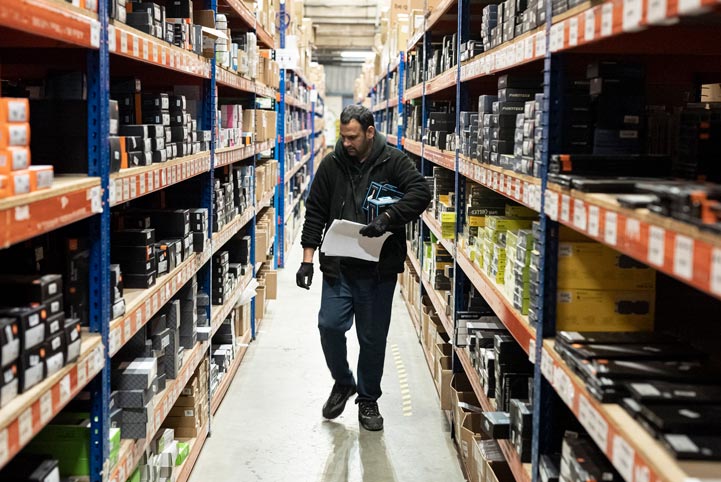
Source: St. Modwen
The UK planning system is restricting growth
The strong growth expected in the I&L sector, and the jobs, investment and productivity it will bring, will not materialise unless sufficient land is allocated in the right locations. The planning system is the guardian for allocating land, therefore it is critical the employment evidence which support Local Plans do a more accurate job at assessing future demand.
This issue has been central to the recommendations of other BPF publications, most recently the BPF’s Employment Land Manifesto which recommends:
- Introducing a Presumption in Favour of Logistics Development within the NPPG when precise criteria are met. This is needed as Local Plans can take years to be adopted and therefore are completely out of kilter with the pace of market changes;
- Ensuring Local Plans allocate sites in the right locations to respond to a broad range of market needs;
- Modernising Employment Land Reviews to allow for the utilisation of ‘real time’ information so that they can be kept up to date; and
- Introducing an Employment Land Delivery Test to ensure that a commensurate amount of employment land is brought forward to counterbalance housing and that any employment land lost to other uses is delivered in the right locations. If a local planning authority failed to meet the delivery test, a presumption in favour of sustainable logistics development could be engaged.
Although the National Planning Policy Framework (NPPF) provides a clear and positive policy context to assessing future economic needs, the Planning Practice Guidance that accompanies the NPPF lacks the same clarity. Economic need plays second fiddle to housing need in the guidance, the latter being subject to a standard methodology with a series of unambiguous steps set out to establish the minimum annual housing need for each local authority area.
There is specific reference to the critical role of logistics and the need for market analysis and engagement with stakeholders, but the guidance fails to provide a clear and robust approach to ensuring I&L needs are met. As a consequence, an array of local authority strategies are being adopted resulting, in most cases, too little land being allocated to meet current and future market demand. This is primarily due to these strategies being backwards-looking and projecting forward historic trends as a proxy for future demand. As a result, modern-day growth drivers are not taken into account, for example: housing growth, online retailing growth, increasing UK freight volumes and the need for larger premises, all of which generate increased demand for I&L land and floorspace. The main NPPG methods for estimating future land needs and their deficiencies are summarised below.
The inadequacies of these models and their application is evident in that supply historically has not kept pace with demand. When demand cannot be fully satisfied occupiers vie for limited available space pushing up rents. This is what we have seen over the last decade with 61% rental growth24, more than double the rate of inflation.
At the national level, the market equilibrium level where supply and demand are broadly in balance and rents are more stable is around 8% availability. This benchmark rate is found in a number of prominent publications such as the GLA’s Land for Industry and Transport Supplementary Planning Guidance (SPG). England’s I&L market has been below this level for over seven years clearly demonstrating the failure of the current NPPG methods in estimating demand accurately. Put another net absorption is a leading measure of demand, comparing occupied space (move-ins) versus vacated space (move-outs).
This relationship between supply and demand is clearly shown in the chart below. When available supply was higher at around 10–12% in 2012–2014 net absorption averaged 47 million sq ft per annum (net). This is higher than the average net absorption more recently from 2015–2020 at 34 million sq ft (net) despite the UK only having just emerged from the global financial crisis (GFC). The key reason why leasing demand was higher in 2012–2014, despite the impact of the GFC, is that sufficient available supply existed to accommodate demand, even though overall demand was weaker compared to the more recent period post-2015. Since 2015, available supply has been well below the equilibrium rate of 8% which has suppressed overall demand as it could not all be accommodated.
A further clear indicator of demand exceeding supply is strong rental growth. As can be seen from the bottom part of the chart real rents25 have been growing strongly since 2015 when availability dropped below 8%. This is distinct from the period after the GFC (2012–2014) when real rental growth was either negative or zero, indicating there was more than enough supply to meet demand.
Definitions
Net absorption is a leading measure of demand, comparing occupied space (move-ins) versus vacated space (move-outs).
To help address the supply/demand imbalance Savills and St. Modwen have developed a new methodology built upon the principle of ‘suppressed demand’ that accounts for demand that has been lost due to supply shortages. The calculation of suppressed demand can then be added to historic demand projections to give a more accurate picture of likely demand into the future.
The high-level steps in the Savills/St. Modwen employment land estimation model includes:
A. Find a market’s equilibrium availability rate: This is around 8% at the national level but can alter slightly from market to market. A market’s equilibrium rate is either when rents are broadly stable or when rental growth transitions from being negative or stable to growing strongly year on year.
B. Identify those years when available floorspace was below the equilibrium rate: This involves identifying previous years when availability was below the 8% equilibrium rate.
C. Calculate suppressed demand: Here you calculate how much demand the market should have had in those years of tight supply in order to be at the equilibrium rate. For instance, if the equilibrium rate is 8% but the market had 5% in a given year, the 3% difference needs to be translated into floorspace. Next, you calculate the average of the ratio between net absorption and available floorspace for every year over the lookback period. This ratio is then applied specifically to the availability uplift that was needed in those years of tight supply to reach the equilibrium rate. This provides a suppressed demand calculation for each year when actual availability was lower than the equilibrium rate. These are then added together to give a total suppressed demand over the lookback period.
D. Add suppressed demand to historic trend: Finally, the suppressed demand is added to the historic demand over the lookback period. The annualised figure of this combination can then be projected forward over the Local Plan period to provide a more accurate estimate of future demand.
This methodology, when run at the England level, estimates future demand will be at least 29% higher than historic levels, equating to a minimum of 44 million sq ft per annum (net). A useful cross-reference to make here is with the BPF’s previous report ‘What Warehousing Where?’ which estimated each home could generate a need of 69 sq ft of warehouse space or 21 million sq ft per annum based on the Government’s annual housing target of 300,000 homes. While Savills calculations are for both warehousing and industrial demand (i.e. the entire I&L sector), this comparison usefully gives an idea of the significant contribution warehouse needs from new homes will make to overall future I&L demand (of up to 48%).
Savills has tested its suppressed demand model across 19 key I&L markets in England. Many of these markets have historically experienced leasing demand well beyond the supply of available land and floorspace. The percentages on the table indicate how much additional demand (as a minimum) should be planned for in the future within each market above historic levels. While these results are based on wider market areas made up of a collection of local authorities, the model can be run at the national level, the individual local authority level as well as more bespoke market areas.
The above suppressed demand figures should be considered minimums as their focus is on correcting past trends by accounting for lost demand due to historic supply constraints. This more accurate historic trend should also be uplifted further to account for current day and future demand drivers, the key ones, as discussed above, being online retailing growth and growth in freight volumes. Savills has developed a method for calculating these factors too (please see below contact details for further information).
For further information on the Savills/St. Modwen methodology, please contact either:
Mark Powney, Director - Economics, Savills
Irene Guillet, Associate - Economics, Savills
Richard Hickman, Head of Planning – Industrial & Logistics, St Modwen (rhickman@stmodwen.co.uk)
Footnotes
1 Under the ONS SIC 2007 Industrial Sections of Manufacturing and Transportation & Storage 2 ONS (2021), Workforce Jobs by Region and Industry - Jobs in Manufacturing, Transportation and Storage for March 2020; ONS (2021) – England, Regional Gross Value Added (Balanced) by Industry – GVA for Manufacturing, Transportation and Storage in 2019 – England; Oxford Economics (2019), GVA by Sector and Employment by Sector for Manufacturing, Transportation and Storage - UK 3 aboutamazon.co.uk/working-at-amazon/ourpeople#:~:text=Our people&text=In 2021 we will employ,1.3 million around the world. 4 blog.aboutamazon.co.uk/supporting-small-businesses/supporting-smes-in-the-uk-2021-amazon-sme-impact-report 5 Gross Value Added (GVA) measures the contribution made to an economy by one individual producer, industry, sector or region 6 Oxford Economics (2019), GVA by Sector and Employment by Sector for Manufacturing, Transportation and Storage - UK 7 The Big Shed Briefing focuses on large units typically of 100,000 sq ft plus 8 MHCLG (2021), Housing supply: historic statistics for the UK - Components of net supply of housing – England between 2015-16 and 2019-20 9 Forrester 10 ONS 11 The BPF’s ‘What Warehouse Where?’ report identified there is 69 sq ft of warehouse space per dwelling in England 12 ONS (2021), Retail Sales Index – Table VolSAT: Total Annual Sales for All Retailing excluding automotive fuel - GB 13 ONS (2021), Population Estimates - GB 14 ONS (2021), Internet sales as a percentage of total retail sales (ratio) (%), October 2021 15 Forrester 16 Prologis (2020), Accelerated retail evolution could bolster demand for well-located logistics space 17 Bringg (2011), State of Retail Delivery & Fulfilment 18 Savills (2020) The impact of Covid-19 on Real Estate. Online Article: savills.com/impacts/market-trends/the-impact-of-covid-19-on-real-estate 19 As also evidenced in BPF Delivering the Goods in 2020, p.5 20 ONS (2021), Online Job Advert Estimates based on Adzuna 21 johnlewispartnership.co.uk/media/press/y2021/jlp-to-recruit-7000-temporary-roles 22 reuters.com/business/amazon-uk-hire-20000-temporary-workers-festive-season-2021-09-28/ 23 dailymail.co.uk/news/article-8693211/Amazonannounces-create-7-000-jobs-warehouses-sites-UK 24 CoStar Q2 2021 vs Q2 2011 - England 25 i.e. rents after accounting for inflation
Read the articles within Levelling Up – The Logic of Logistics below.
.jpg)

